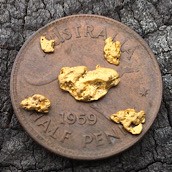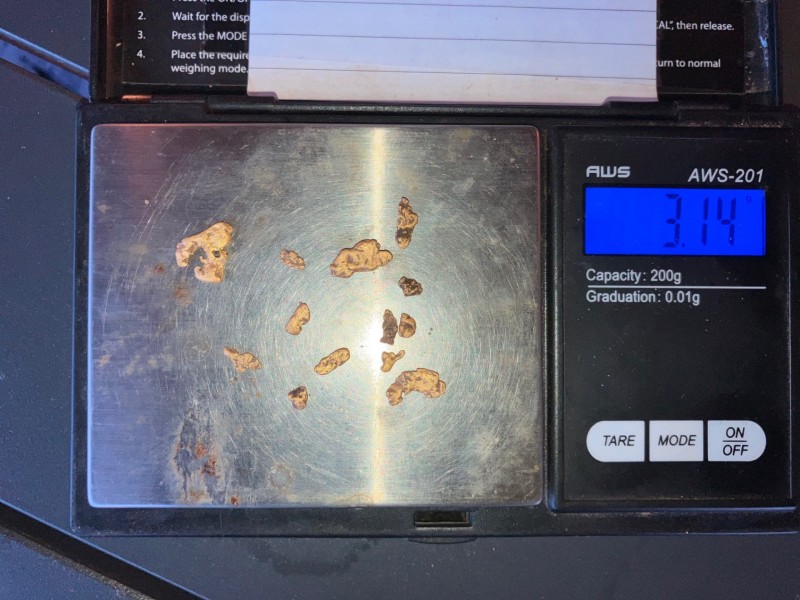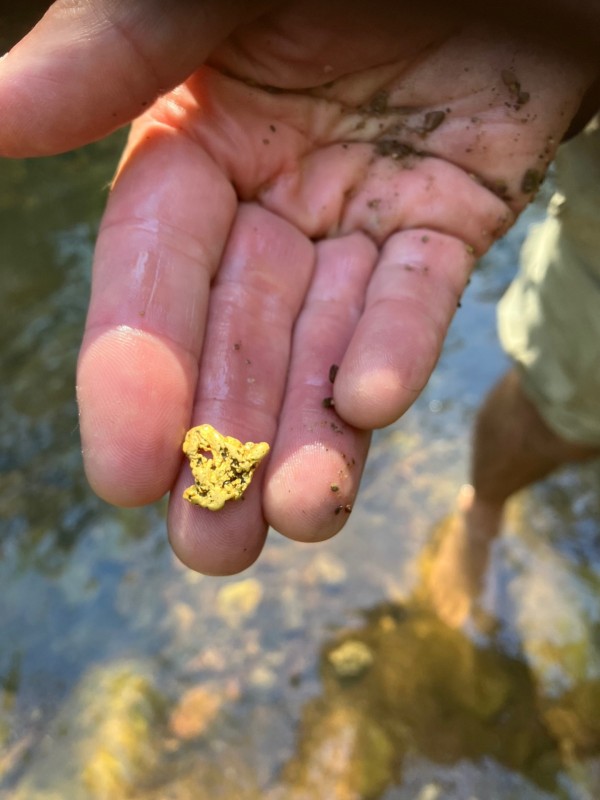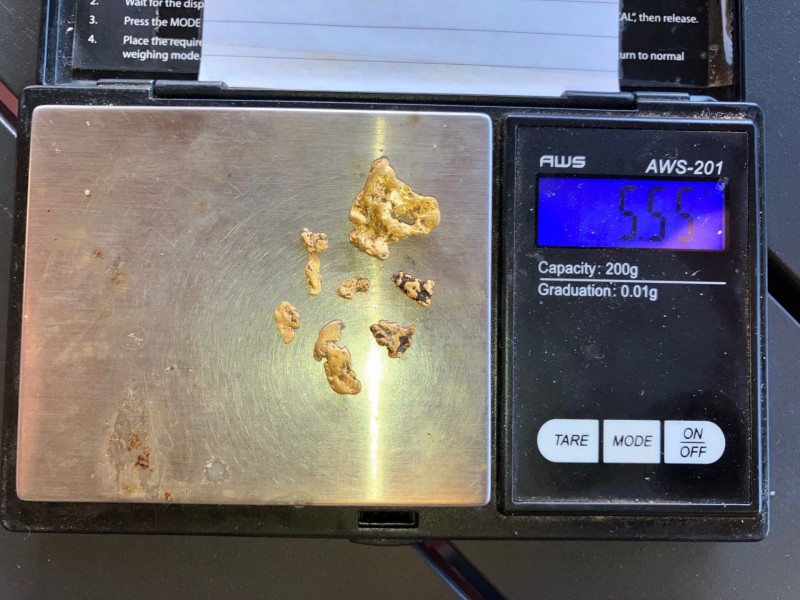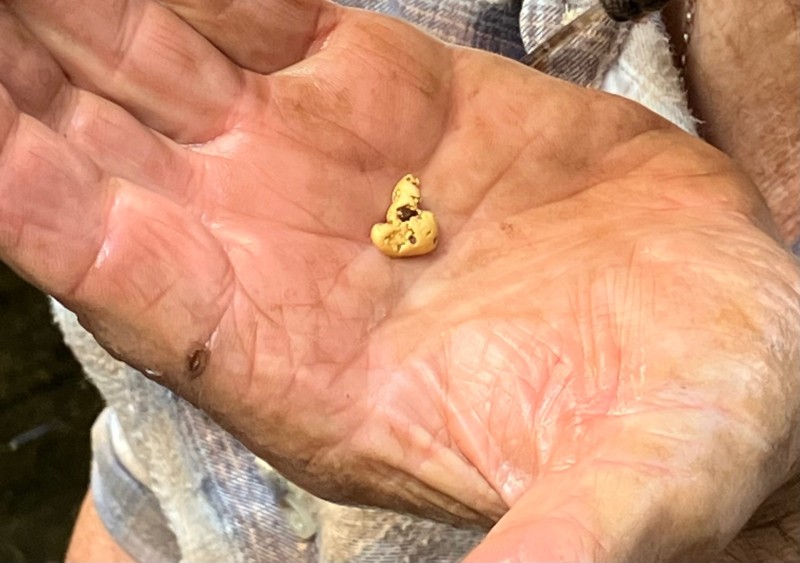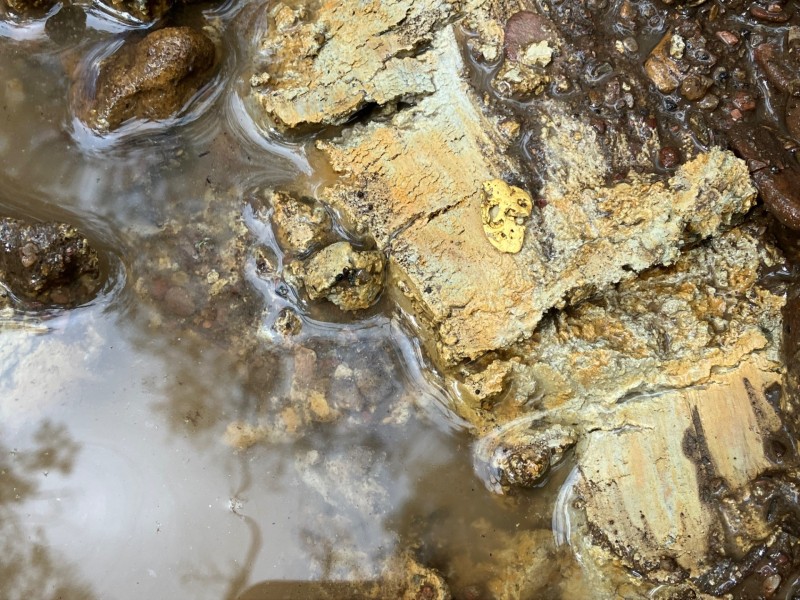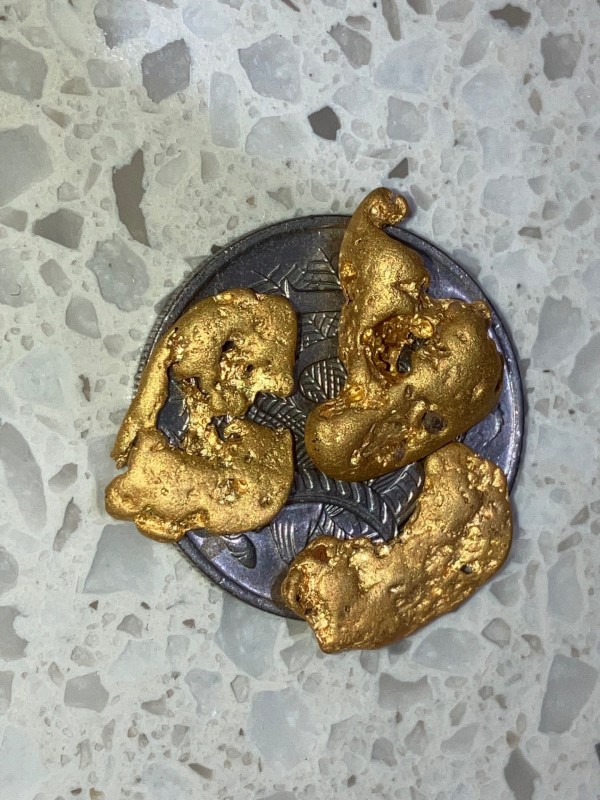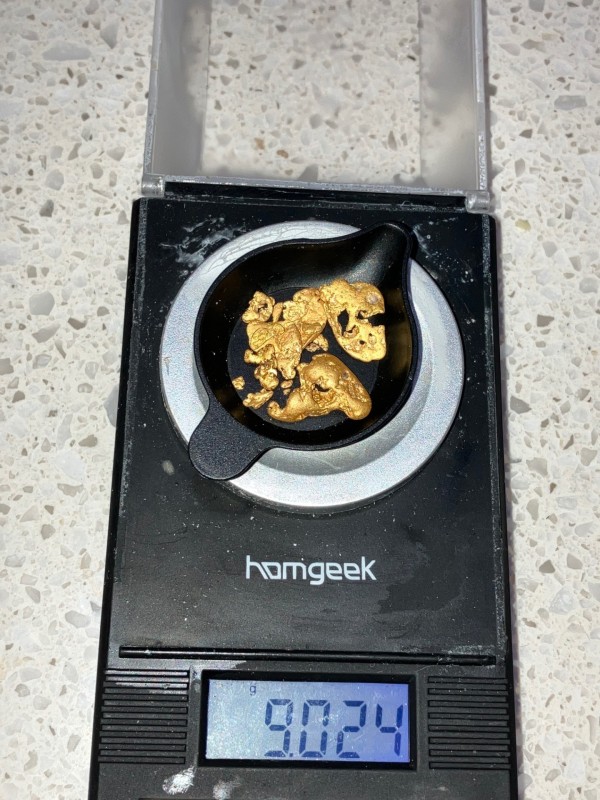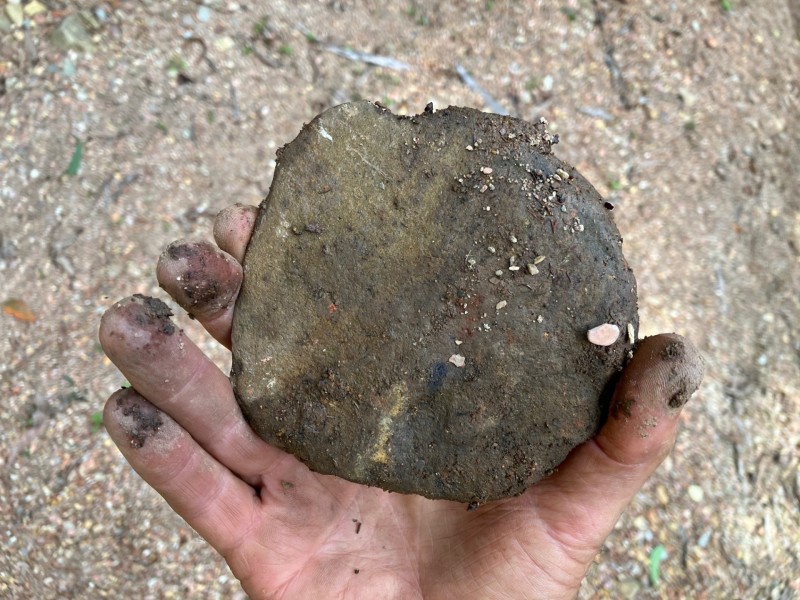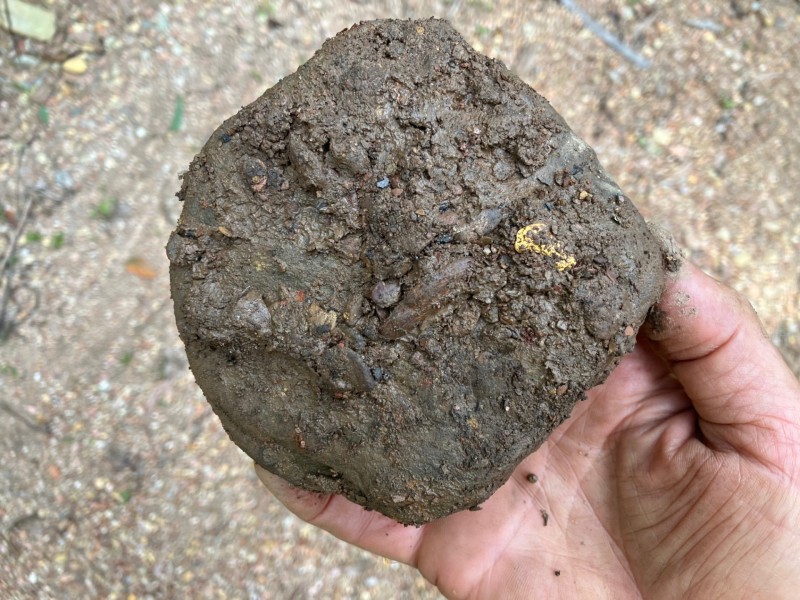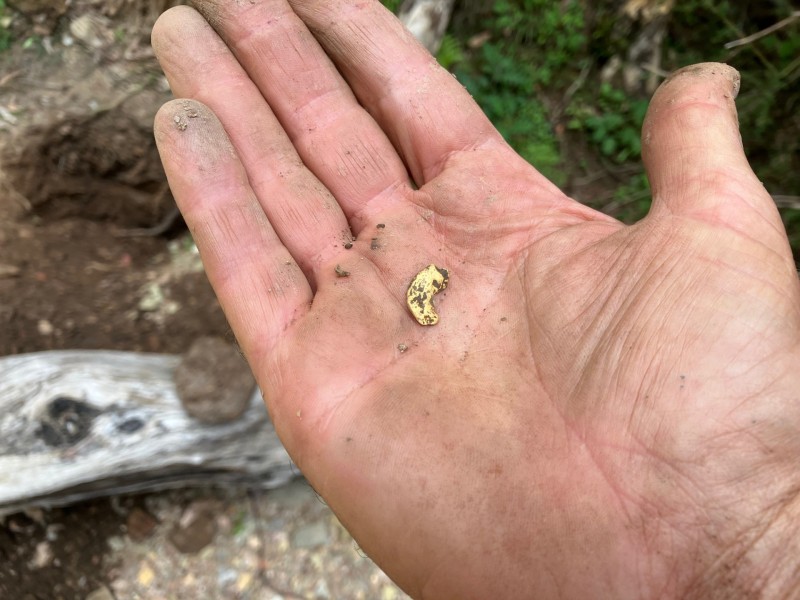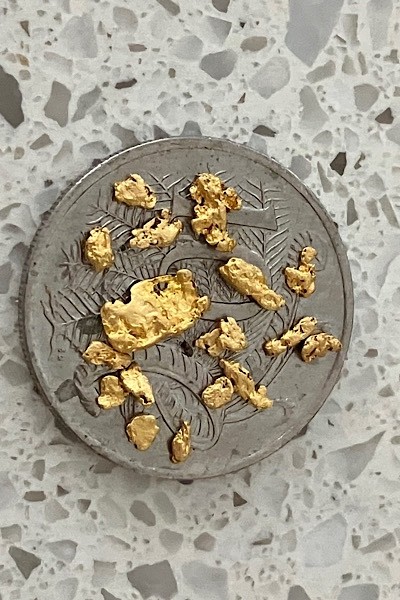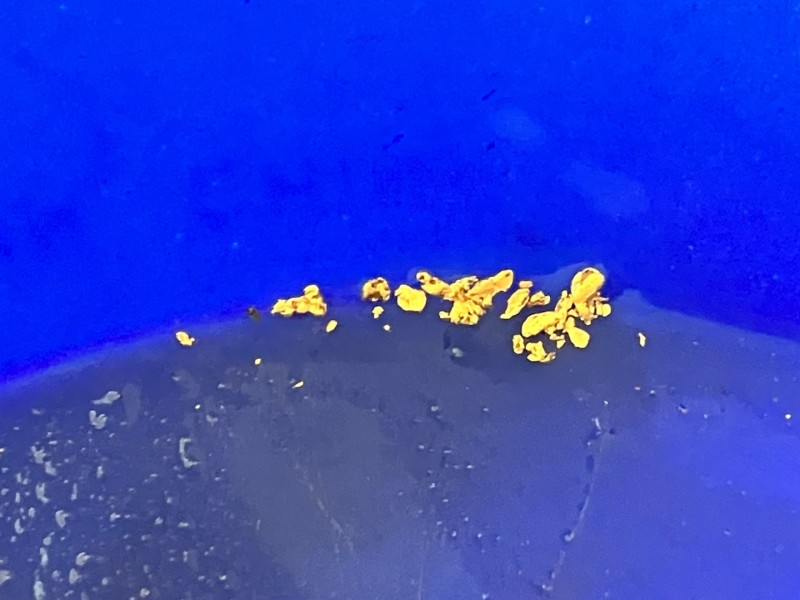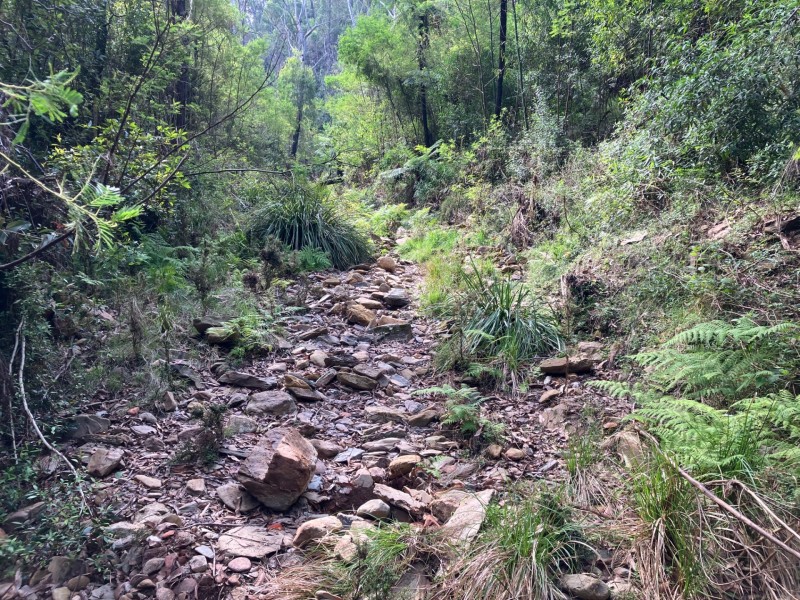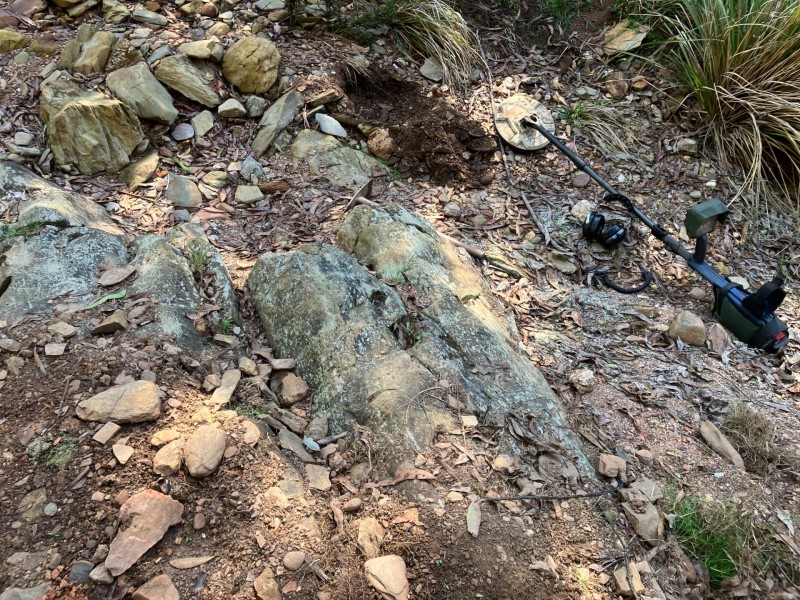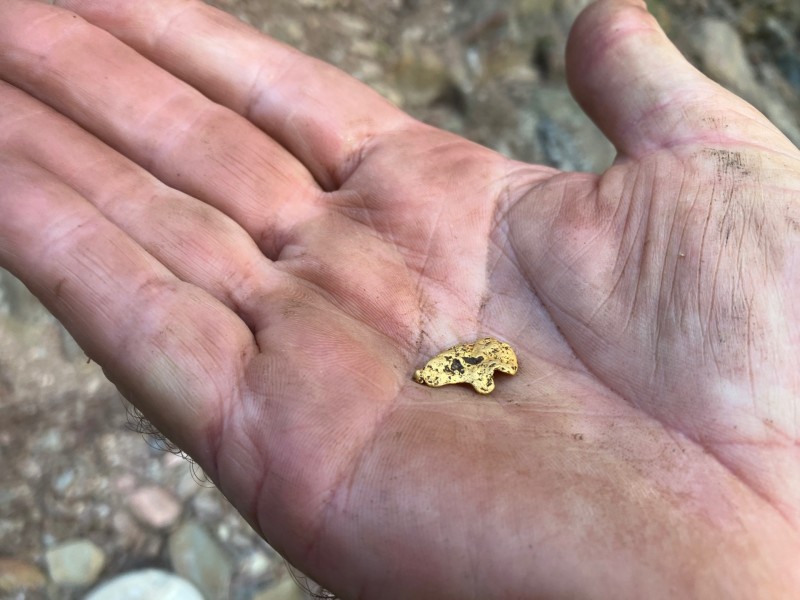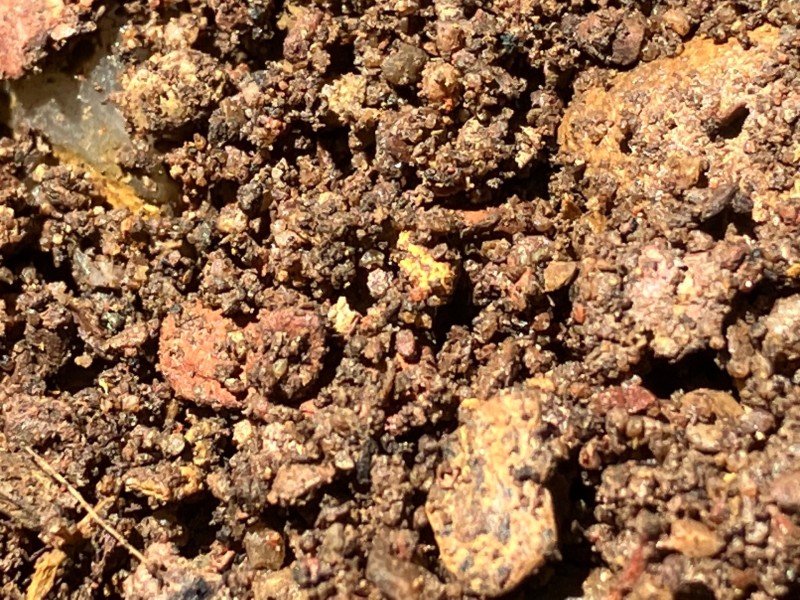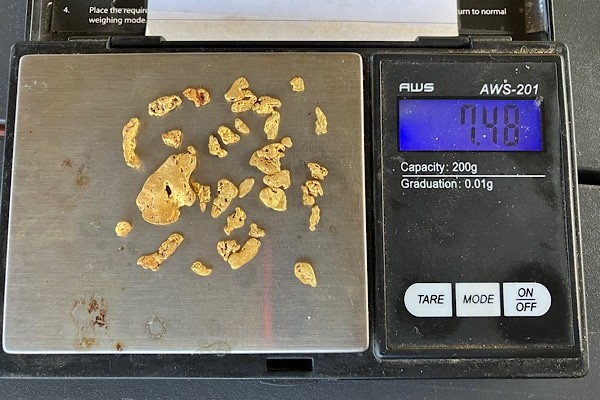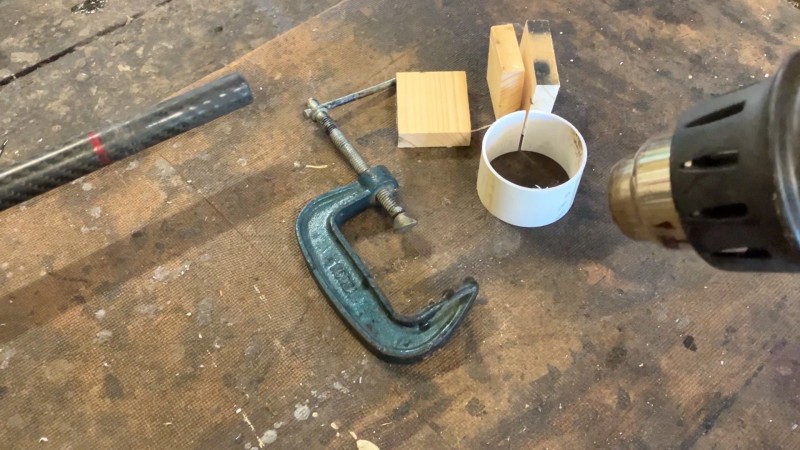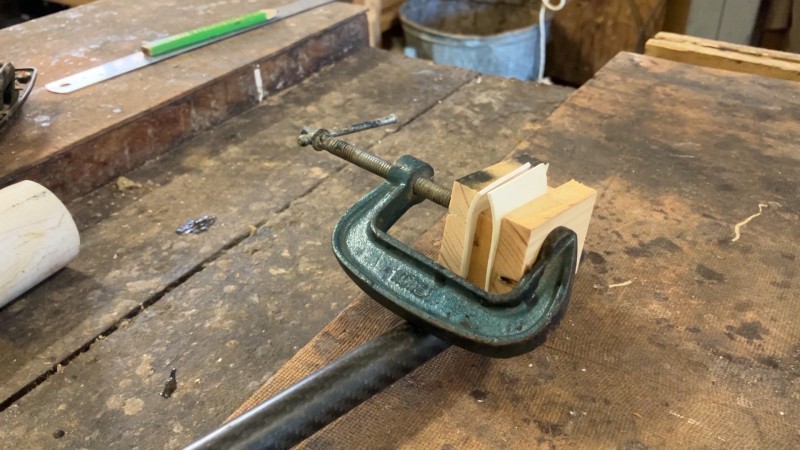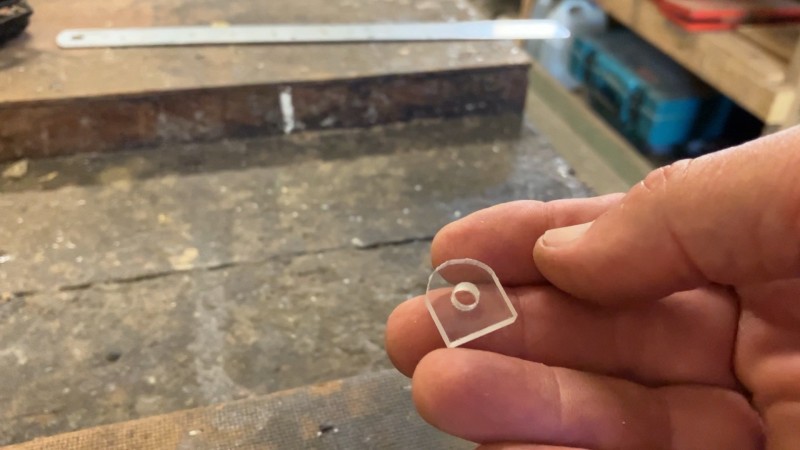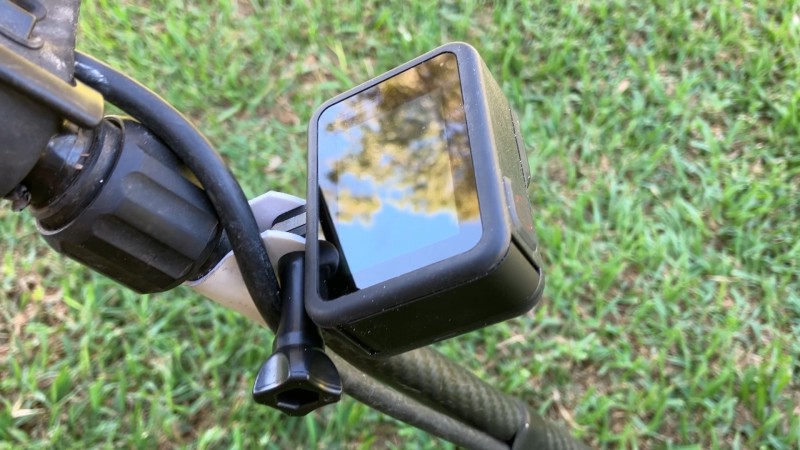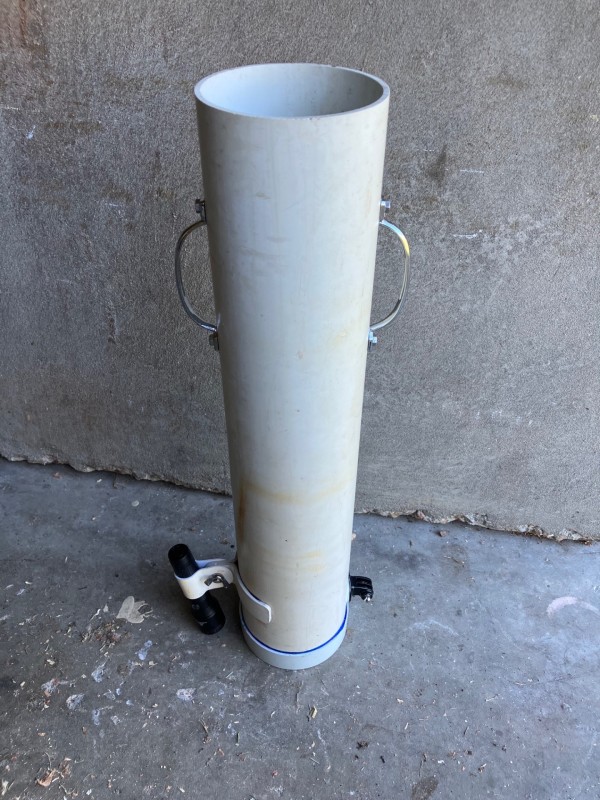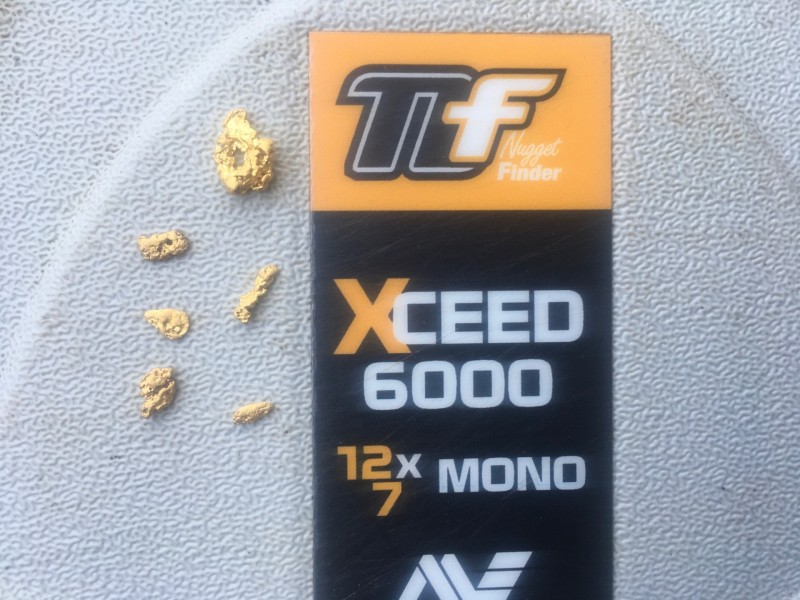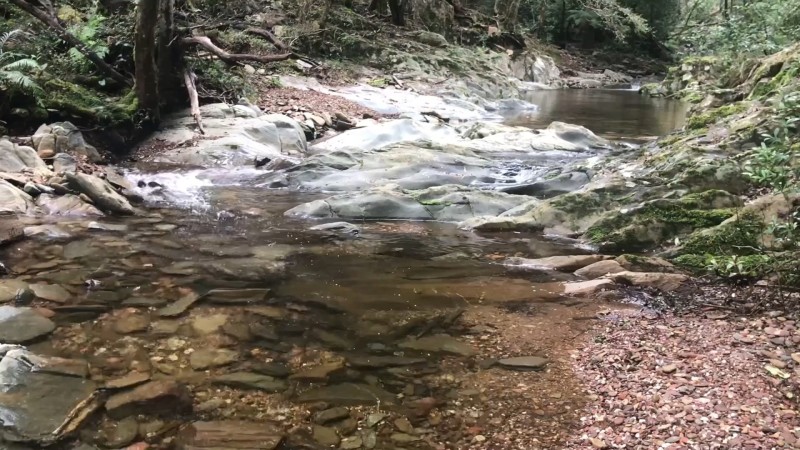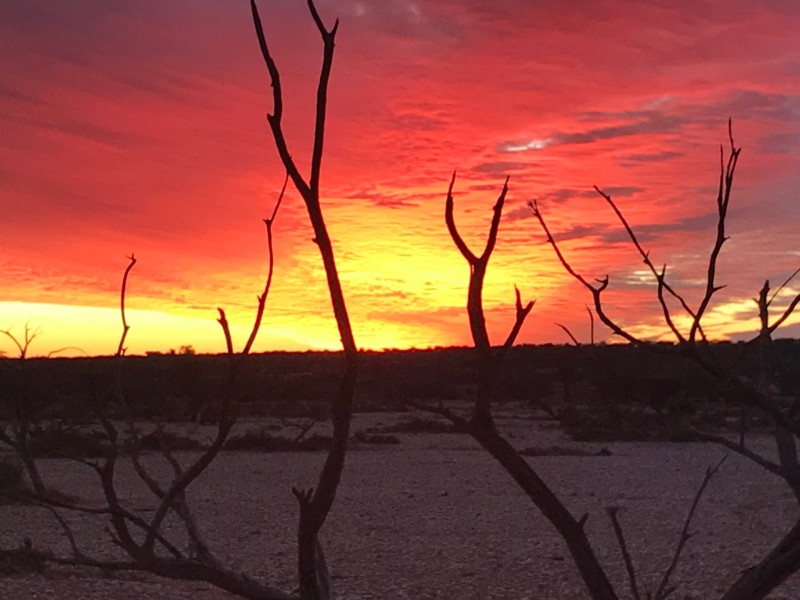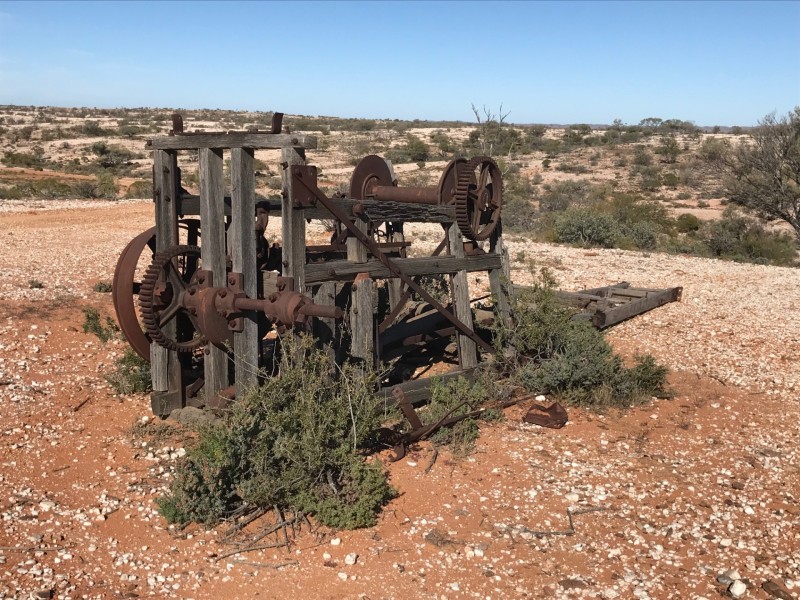-
Posts
35 -
Joined
-
Last visited
Content Type
Forums
Detector Prospector Home
Detector Database
Downloads
Everything posted by Lesgold
-

Using The 7000 To Pick Up The Scraps Missed By The 6000
Lesgold replied to Lesgold's topic in Detector Prospector Forum
There’s an old saying that goes something like this - “never walk away from gold to look for gold.” We knew that the detectable yellow in this spot was starting to hide itself away from us and the only thing that we could do was to work harder and try to change our approach. Joe and I decided to mix things up a bit during yesterdays playtime. We agreed that instead of both of us using the one type of detector, we would take one zed and one six. Joe had the 7000 with the 12” Nuggetfinder and I took the 6000 with the 12x7 attached. We also decided to wear waders so that we could focus on detecting the deeper pools and also protect ourselves from leeches. It was a beautiful, cool day which kept us comfortable while we were wrapped up in plastic. Joe still had problems with the zed giving false signals in the deeper water but he eventually solved the problem. We had thought that the issue was due to the pressure of the water compressing the coil and making it touch sensitive but we were wrong with our assumption. The actual cause was the slight flexing of the shaft due to the forces involved in keeping the coil submerged. Joe found that if he placed his left hand quite low on detector shaft and guided the machine with his hand, the problem disappeared. Repositioning the guide arm much lower than usual could be worth trying if we continue to detect in water. We started working our way up the gully after finding a couple of small pieces of flood gold on the bank of the creek. We had to stand in water to detect this area which made it obvious as to why they were still there. I made it to a pool that had produced some nice gold on previous trips and decided to detect it really well. Having waders on allowed us to take our time to cover areas well without having to worry about getting wet. The six ran reasonably well most of the time but wasn’t as stable as the seven. The mineralised black or red soil in any wet area would upset it but it generally ran well. The Nuggetfinder coil did its job and picked up a target in about knee deep water. Joe and I had to fluff around for about 5 minutes before a nice little piece ended up in the scoop. We moved up to another patch that had produced a lot of small pieces a few weeks ago. On our last trip we were not able to go over this area as it was still submerged. Joe picked up a good signal where rock and gravel had moved with the recent rain. It was an unusual signal that had a distinct wobble to it. As usual, we always try to analyse what we are hearing and have a guess at what the result would be. We decided that it would be gold and that it would have an unusual shape. A long, C shaped piece quickly ended up in Joe’s hand. A few more small pieces were recovered from this area after moving some rocks and gravel. We continued to detect our way upstream without finding anything but rubbish until Joe ended up with a beautiful low/high signal in a long pool of water. He called me over to have a listen and as we often do, both machines were put over the target before the surface was disturbed. Both detectors picked up the signal well with the seven giving a better response. As it was in water, the dig was a bit slow but after a few minutes the best piece of the day was in the rattle jar. A few more small nuggets were found upstream before we decided that the day was done. It was another good, productive trip out in the bush. We still have at least one more day to finish this area before moving on to a new spot. -

Using The 7000 To Pick Up The Scraps Missed By The 6000
Lesgold replied to Lesgold's topic in Detector Prospector Forum
We ended up with some good rain last week and some minor flooding resulted. Joe and I were keen to get back to the gully with the hope that the rocks and gravel would have moved around and hopefully provide some new opportunities. When we arrived, it was obvious that the changes were only minimal but there were areas where some erosion had taken place or deposition of material had occurred. We decided to use the Zeds as they would be much quieter in the wet conditions. The six can be a real pain when the mineralised soil becomes damp and can, at times, be unusable. The Zed also suffers from the same disease but not to the same extent and can mostly be tamed. When we arrived we noticed that water was still flowing which restricted our movement. We thought this would be the case and knew that we would only be able to work the shallows and edges without filling our boots. Joe picked up a piece fairly quickly and got the monkey off his back. We have always said that once we have a piece of gold each, the rest of the day is a bonus and we don’t go home skunked. Don’t get me wrong, we still have enjoyable days where the rattle jar just doesn’t rattle but having a piece of gold in your hand puts the icing on the cake. After moving upstream, I decided to inspect the pool where a good nugget was found on a previous trip. The water level was obviously higher than a couple of weeks ago but there was evidence of erosion on the steep edge below the water surface. After a couple minutes a good signal was detected and Joe came up to help get the target out. This meant removing snake gaiters, boots and socks and then rolling pant legs up above the knees in preparation for the extraction. I noticed a leech had attached itself to my leg and had begun to draw blood. He was quickly dispatched and I climbed into the water to dig the target while Joe guided me with the detector. After a couple of minutes a nice little nugget was recovered in the scoop. Joe suggested that I should check the remainder of this pool while I had my boots off. I continued detecting and thought I had a target in a deeper area of the pool but it turned out to be a false signal. We both found that the Z Search coil would false in water once it was submerged over about 12”. Perhaps it’s the pressure compressing the top and bottom faces that makes it a bit more bump sensitive. This combined with the mineralised material was probably contributing to the issue. After slowly detecting most of the pool, a broad, faint signal was picked up. I dug down about 8” and by this stage, the zed was getting pretty excited. It was already quite difficult as I was in about a foot of water and every dig saw the pick head and much of the handle totally disappear below the surface. Digging continued until the target finally moved location slightly. The scoop was then used to recover what turned out to be a nice piece of gold. With no other signals found, it was time to get out of the water, kit up and move on. Two more leeches had found me while I was walking in the water and needed to be encouraged to find another food source. That was my final contribution for the day. Joe found some more pieces near a patch that we had worked recently and made the tally look a little more respectable. The final drama occurred late in the day. I had been walking through some thick scrub and somehow dropped my radio. I didn’t notice it until much later and thought it was lost forever. It must have got caught in some bushes while I was pushing through the dense undergrowth and snapped the catch causing the radio to drop. Joe and I retraced the path and used his radio to call up the lost unit. We eventually heard the other radio and were able to follow the sound until it was recovered. That was the signal to call it quits for the day. We didn’t end up with a huge number of pieces but we were happy with what we had found. We may visit this spot again when the water level drops. -

Using The 7000 To Pick Up The Scraps Missed By The 6000
Lesgold replied to Lesgold's topic in Detector Prospector Forum
Yesterdays largest nugget was a bit of a strange find. I watched and partially helped Joe dig two really deep holes for junk. He was exhausted and frustrated that neither target ended up being the right colour. It was just one of those days where his junk to gold ratio was higher than mine. My turn will come next trip. I moved a bit further upstream and started detecting the bottom of a long pool of water. Everything about it seemed right. It was much lower than the rest of the gully and it had washed out to a light grey decomposed shale bottom. It was potentially a good gold trap. Over the past couple of months we had popped a detector in that pool every time that we had walked past it but had never made the effort to work it properly. We were not setup to detect in water as we never carried waterproof clothing to enable this to happen. We had also dismissed the pools potential as we had met two groups of people on previous trips that had waders and wet suits with them. They were focussing on that type of area so we naturally assumed that this pool would have been given a thorough workout. I started detecting the bottom as well as I could with the z search coil by pushing it down onto the bottom of the pool and progressively moving out until I would run out of reach. There was no way the boots were going to get wet. This coil is hopeless in water. It is so buoyant that it takes considerable force to keep it on the bottom. Detecting efficiency is lost as you need to use both hands to keep the coil down. After a couple of minutes of detecting, I ended up getting a screamer of a signal. Joe was called up on the radio and he quickly arrived to help out. After listening to the signal, he had his boots off and was in the water before I could draw breath. After pinpointing the target, the scoop was used to bring up the clay/gravel mix from the bottom. On about the third or fourth scoop a shiny piece of gold came up sitting on top of the clay. It was a beautiful piece sitting there just smiling at us. We momentarily stopped and looked at it with our mouths open. Our plan was to find bigger gold at depth with the zed but this piece could have been found with an ice cream container lid bolted to a broom handle. As Joe had his boots off and pants rolled up, he detected the rest of the pool for no other signals. It just goes to show you that you must never assume anything in this game. We moved back closer to an area where I had picked up the earlier piece. I detected the right side of the gully when I found the first bigger nugget and decided to concentrate on the other side on the return trip. We had to leave early to get home so time was running out. About 20m down stream a very faint sound was heard which pulled me up. Again rocks were moved to get the coil a bit flatter to the creek bed. The subtle sound didn’t go away so hot rocks were ruled out. If it was going to be a target, it would be deep. Some material was removed and finally a signal started to develop. Stone and gravel was dug out using the pick and I continued until I hit a yellow decomposing bedrock material. By this stage the detector was really singing and I knew I was in with a chance. Joe came up and took one look at the hole and knew straight away that this was going to be a nice piece. He gave one big scrape with the pick, looked down and turned to me and said - “Did you drop that?” He pointed at the shiny, polished piece of gold sitting on the clay. We couldn’t believe what we were looking at. It had obviously moved with the last flood and had the appearance of a piece that had been sitting in acid. We picked it up and admired it before placing it back into position for the photo. We had to walk to where we left some gear and as per usual, Joe picked up another nugget on the way back. He has this uncanny knack of doing this on a regular basis. What started as a reasonable day ended up exceptionally well. The gold was cleaned up a bit last night. Here is a couple of shots showing what we ended up with. Its a good feeling when a plan comes together and you get results. It was interesting to note the difference in how the 6 and 7 ran in this particular area. The threshold on the 7000 was perfect. Very occasionally it would pick up a faint signal on a hot rock. These rocks appeared to be basalt. I reckon I hit less than ten of them for the day. The 6000 on the other hand was more erratic and reacted to the iron rich hot rocks which were generally red in colour. We would be constantly kicking those out of the way as they often gave off a signal similar to a deeper target. Darker soils and wet clay were also an issue for the GPX . With that being said, the 6 was still quite usable and had excelled in this gully. We both believe that the depth capabilities and the perfect threshold of the zed combined with the sensitivity of the Z Search coil helped us immensely in the past couple of trips. -

Using The 7000 To Pick Up The Scraps Missed By The 6000
Lesgold replied to Lesgold's topic in Detector Prospector Forum
The soil moisture on the east coast of Australia will increase significantly over the next couple of days. Detecting well in these conditions may require the user to be able to hold their breath and duck dive or use SCUBA to keep a coil on the ground. -

Using The 7000 To Pick Up The Scraps Missed By The 6000
Lesgold replied to Lesgold's topic in Detector Prospector Forum
Speaking of hot rocks, I found one today. Joe and I decided to cover the rest of the gully with the Zeds and 12” Nuggetfinder coils to see if we we could pick up some more deeper gold. A few small pieces were found early and after a break we continued to move upstream to a narrow area that we had covered well with the sixes. While detecting a spot that had produced some small specs on previous trips, a really faint change in the threshold tone was heard near a rock bar and I decided to move a few stones to investigate. After digging down about 4”, a faint, repeatable signal came through. The hole was enlarged and deepened until the target finally popped out. We had been digging huge holes all day for bits of rubbish and by the time this target was out in the pile, it was screaming in a similar manner to many of the earlier digs. A few rocks were removed from the spoil pile and the target suddenly disappeared. I thought that it may have dropped down a hole but after flattening the spoil pile no signal was heard. I eventually ran the detector wide of the pile and it went off on this rock. It didn’t look like a hot rock but the detector went nuts when it was anywhere near it. The answer was obvious when the rock was turned over. A nice flat piece was the result. We found some more gold but it is currently in the ultrasonic cleaner. I will post up a few pics in the morning. -

Using The 7000 To Pick Up The Scraps Missed By The 6000
Lesgold replied to Lesgold's topic in Detector Prospector Forum
Just put up a clip of a couple of the small pieces that my grandson found on his first trip out in the bush. Phrunt’s earlier comments about the 6000 having a narrow range in relation to small gold shows through a couple of times in the video. -

Using The 7000 To Pick Up The Scraps Missed By The 6000
Lesgold replied to Lesgold's topic in Detector Prospector Forum
Thanks for the feedback Simon. Much appreciated. I have seen the 15” concentric in use and was very impressed with it. Not really suitable for this type of prospecting with the large rocks but it would be fantastic in open country. Yes I was lucky to have some water reasonably close and I should do something about it. It’s a pity high bankers are illegal for us to use in NSW. The material would have fed through quickly as it was all contained within gravel with next to no clay. My grandson took some footage of some of the gravel that I ran through the pan. -

Using The 7000 To Pick Up The Scraps Missed By The 6000
Lesgold replied to Lesgold's topic in Detector Prospector Forum
Simon, I have a question or two for you in relation to the 8” Xcoil. How does it perform in relation to the 10x5 Coiltek on the six? I assume it would have pretty good sensitivity but what about depth? It could be another option in my situation as I have family members who would grab the six every time and leave me twiddling my thumbs. I have heard a mate say that it was very good up at Tibooburra on the small stuff but this was only hear say. I assume that it would love hot rocks even more than the. Six. I know why they are called Xcoils. The “x” is for expensive (especially when you add the cost of an adaptor.) It is still a viable option if the performance is there and I assume it would balance nicely on the end of a 7. -

Using The 7000 To Pick Up The Scraps Missed By The 6000
Lesgold replied to Lesgold's topic in Detector Prospector Forum
Cleaned up the gold that the 6000 recovered. What you see is actually the result of a lot of careful work so in reality the 7000 actually did quite a good job. When we arrived at the patch, I had my 12 year old grandson run over the ground before any gravel was disturbed. He found 5 targets that were obvious which was pretty good as he had never been detecting before. We dug those pieces (which were very small) and then systematically turned over the ground and dug a little deeper and wider to recover the remaining pieces. As soon as we hit hard packed, dirty gravel the gold disappeared which indicated that it was a drop zone during floods that occurred late last year. I’m sure that the Zed would have squawked on some of those larger pieces if we had followed the same detailed search procedure a few days ago. What Phrunt has been saying was really reinforced and made obvious as I watched my grandson and daughter searching this area. I spent most of the day watching and filming as they enjoyed the excitement of the hunt. Often a scrape of an inch would reveal a screaming signal that was not audible a minute earlier. Gold signals lost in tailings piles or a scoop that had too much material in it were a common occurrence. To his credit, my grandson soon leant the tricks required to achieve success. The gold in the photo weighs just over a gram. The pieces that were panned were dried and weighed and came in at just over .2 grams which was surprising. There may have to be a rethink about leaving the remaining specs for someone else. -

Using The 7000 To Pick Up The Scraps Missed By The 6000
Lesgold replied to Lesgold's topic in Detector Prospector Forum
Couldn’t agree more Phrunt. It has made life easy. I took my eldest daughter and grandson back to this spot with the 6 in tow. I knew that there would be gold left in that patch but gee, it was small. It was my grandsons first real attempt at prospecting and he picked it up quite well and had a ball. Just cleaning up the “fly specs” now. Just for a bit of fun I took two pans of the gravel and panned it out. Had to walk about 40m to get to water so it lost its appeal quite quickly. Here’s the result. I was quite impressed. If I was keen, I could classify a few buckets and have a play in the water. The problem with doing that is detecting time would suffer. So maybe not just yet. Lol. -

Equinox 800 For Gold. 10x5 Coiltek Vs The 6 Inch.
Lesgold replied to Tyler's topic in Detector Prospector Forum
When the Equinox 800 first came out, I purchased the 6” coil. It was a pretty good coil and it found a bit of gold in suitable locations. I remember performing a comparison test against the SDC with the standard coil. I found a benign mullock heap which contained quite a few small pieces of gold. An area about 2mx2m was raked clean and the area was carefully detected with the 2300. Any targets that were identified (without any boot scrapes or scratches with the pick) were marked with a blue plastic marker (like the ones you see in kids board games) 7 targets were identified. The same area was then detected with the Equinox and targets were marked with yellow discs. I wanted to give the Equinox a slight advantage so it was used after the SDC did its thing. 4 targets were found with the other 3 being a no show. The Equinox gave a very good signal on one of the targets but the SDC won hands down on that test in that particular location. One test doesn’t doesn’t prove much at all except that the Equinox can find small gold. All 7 pieces ended up being gold. -

Using The 7000 To Pick Up The Scraps Missed By The 6000
Lesgold replied to Lesgold's topic in Detector Prospector Forum
Thanks Phrunt. That sounds just right for the 6000. Just about to head out now with the detector to see what turns up in that patch. -

Using The 7000 To Pick Up The Scraps Missed By The 6000
Lesgold replied to Lesgold's topic in Detector Prospector Forum
Your comment about the six going from no signal to a screamer in a short distance is so true. My mate and I were out detecting yesterday and I had this situation arise twice. I went to a shallow rock bar that had produced a few small pieces on previous trips. I decided to move some rocks so that I could get the coil a bit closer to the bedrock. Initially I checked a small area for any evidence of a signal and then a thin piece of shale type material was removed. When the shallow water cleared, I could see the bedrock below and ran the coil through that area. The six screamed. After a bit of fluffing about, a small nugget was retrieved. In another situation, I ran the 10x5 coil over some damp bedrock that had a thin layer of clay sitting on it. It was potentially a good area to trap a piece of gold. When I ran the coil over the clay, the machine didn’t have a break in the threshold but gave that sort of low pitched moan type sound that tells you there is something there that it needed to react to. It was very much like the sound you get when you run over some mildly mineralised ground. As it was in one confined area, a scrape with the pick was in order. About half an inch of clay was removed and the area was detected again. The machine reacted in protest. Again, a small piece of gold ended up in the rattle jar. When working mullock heaps that contain gold, removing material an inch at a time before detecting often pays dividends. This issue is more evident with the smaller coils (which is to be expected). There was a comment earlier about running in normal. It is fantastic if you can and does produce outstanding results. In the area that we are currently working you could run both machines in normal if you wanted to. The only issue would be that running in normal would reduce the life of the detectors…………. Within ten minutes they would be wrapped around a tree and have huge rocks dropped on them from a huge height. -

Using The 7000 To Pick Up The Scraps Missed By The 6000
Lesgold replied to Lesgold's topic in Detector Prospector Forum
You are right phrunt. Coil sizes and types do make a difference. I’ll take the 6 back with the 10x5 attached to try and sniff out some small pieces. It would have been good to have both detectors on site at the same time but I’m not that keen to carry two machines the long distance required for this exercise. My mate and I have always done a lot of comparison testing on live undug targets just for the fun of it. When ever new coils or machines come out we often grab a couple of detectors and search hard for some faint signals and then run the different coils/machines over them using a range of settings. I’m not a big fan of planting targets unless there is no other real option. Some people say that we are wasting prospecting time doing this but we don’t care. We enjoy doing it and the discussion and surprise makes it worth it. I would love to try a small X coil on the Zed. I have heard it is very sensitive to small gold. What’s your opinion of it? -

Using The 7000 To Pick Up The Scraps Missed By The 6000
Lesgold replied to Lesgold's topic in Detector Prospector Forum
That’s a valid point. Nearly all of the targets would have been easily recovered using the 6. The point is, this area was detected well with the 6000 on previous trips with no targets being heard. The 7000 picked up 3 signals in close proximity to each other and were recovered from good depth. This resulted in rocks being moved and gravel shifted in order to cover the ground well. What you saw in the clip was a result of that activity. If we didn’t take the Zed with us on this trip, the gold would still be in the ground. I’m not putting down the 6000, (it is actually our go to machine) I was just pointing out what happened and how the 7000 really does sniff stuff out that the 6 can’t hear. The two machines are a fantastic combination. The small patch area was detected really well with the Zed until I was satisfied that there was nothing else to be found. The problem I did face was the machine was trying to tell me something but no matter what I did, it could not give me enough information and lock onto a target. As this was a flood gold deposit, I assume that there will still be some small pieces present and possibly some pan size specs. With Easter coming up, and family visiting, the plan is to head back with my daughter and grandson to have one more play at the patch. This time the 6000 and a pan will be used. It is amazing how the 6 can absolutely scream on a small piece and yet the 7000 won’t even hear it. Im hoping they can have some fun and share in the thrill of holding some pieces of gold. I’ll report back if the 6 does find anything. -

Using The 7000 To Pick Up The Scraps Missed By The 6000
Lesgold replied to Lesgold's topic in Detector Prospector Forum
They are good finds Doc. You are right about its ability to sniff out deep targets. When we were onto the small gold, we just got into the zone and forgot about getting the phone out to do some filming. As things slowed up a bit, we finally drew breath and took the time to take one small bit of footage. It’s just a raw, unedited clip so apologies if it is clumsy. It is what it is. We had our machines running in sensitivity 15, high yield, difficult. Except for the really small pieces, they were banging through really well. -

Using The 7000 To Pick Up The Scraps Missed By The 6000
Lesgold replied to Lesgold's topic in Detector Prospector Forum
Agreed. The 6 makes life very easy but the 7 is a real workhorse. I accidentally left the guide arm at home which made for an interesting outing. Using a detector without one puts a lot more strain on the body. I found my concentration span was shorter yesterday due to this and short, regular breaks were needed to maintain focus. -
My detecting mate and I have been working a dry gully for quite a while using our 6000’s with 10x5 Coiltek coils attached. We had been finding a bit of small gold but lately our returns diminished and we had almost decided to move to a new location. In a bid to squeeze out a few more pieces, we decided to detect the ground with our 7000’s and try to uncover a few deeper nuggets. We weren’t expecting much as we had spent a considerable amount of time working this area on the short gully and thought that if we could come home with a piece or two we would have achieved our goal. The Six with the small coil really suited this area as there were many potential gold traps and hiding spots for the tiny pieces that inhabited this location. The Zed’s were fitted with Nuggetfinder 12” Z search coils and after a ground balance and tune were running exceptionally well. The hot rocks and noisy ground that played havoc at times with the 6, were ignored by the 7’s so we knew that we had a bit of potential to find that really subtle signal. We moved slowly and tried to get into difficult areas and hopefully jag something for our effort. After about 20 minutes we added a couple of small pieces to the rattle jar from steep banks on the sides of the gully. It was agreed that the shallow pieces would have been picked up easily with the 6000 but were now happy that we hadn’t been “skunked” for the day. Joe was working a stretch of ground that had produced well for us in the past so I decided to move upstream about 50m to give him some space. I started at a rock bar that had given up some treasure about a month or so ago. We had pulled about 6 very small pieces on and around the outcrop and made a concerted effort to cover all the ground in that area very well. Every subsequent trip resulted in a repeat of that process just in case we missed something. The same region was detected today with the Zed and to my surprise, a very faint signal was heard. It was in an ideal location next to the rock bar on the inside section of a bend. You can see the hole in the photo. We had hoped to find a piece of gold at a depth that the Six couldn’t see and it finally happened. It must have been on edge as the signal was initially very soft and only increased during the dig. What popped out was a pleasant surprise. The 6000 has dominated our detecting for a couple of years now and the Zed barely gets pulled out of the cupboard. It was good to get its coil scraping on the ground again and put through its paces. We had forgotten how quiet it could be when the ground suited. We had also forgotten about digging deep holes until we were quickly reminded of its power. Rusty nails and bits of steel with soft enticing signals generally resulted in ugly growls and swimming pools being dug half way to China. We moved upstream and continued to detect some old ground looking for that deeper target. I was lucky enough to get a really faint signal behind a large rock. After digging a deep hole, a small, shiny nugget surfaced. I could see why the Six would not see a piece of gold at that depth. When the hole was inspected with the coil, another break in the threshold told the story of a surprise awaiting inspection. When a piece of gold ended up in the scoop, I called Joe over and we started moving rocks and detecting a small area thoroughly. A bunch of small pieces resulted. We had a lot of fun working that area together. Joe finally moved 20 metres upstream and found another patch of deep, small pieces of gold. The river worn gold was often visible in the scoop or in the ground like the piece shown in the picture. Joe pulled a couple of pieces on the walk back including one that was in a pool of water. Boots and socks came off and a slow and frustrating recovery followed. It’s great to see a prize for all the effort put in. The final picture shows the result of our day out. Quite a few of the pieces were so small that they wouldn’t move the scales but they all added up. It is pleasing that the Zed can still earn its keep on the tiny gold. Most of the pieces found would still be in the ground if we had used the 6000’s on this trip. Having a combination of machines has proved to be a winner in this area.
-
Hi Folks, It’s Sunday afternoon here and I’m trying to get ready for a few days detecting over the next couple of weeks. I’ve been working some gully areas with a mate but he’s gone away on a prospecting trip for a month and it looks like I’ll be working solo during that time. We put out a YouTube clip last week and it was so easy with two on the job. When we detected a target, one person would film as the other person dug out the buried metallic object. It saved a lot of time as normally tripods etc need to be set up and this often becomes a frustration that can take the edge off a trip. I decided that I’d mount my GoPro on the shaft of the 6000 to make life a bit easier for some of the footage that I plan to take on the next outing. When I looked through the various assortment of mounts that I had for the camera, there was nothing suitable for the job so I decided to make one. It is a simple task that can be achieved with some PVC pipe, some basic hand tools and a hot air gun. A piece of 50mm pipe was cut to 30mm in length and a slit was cut down one side. A spacer block and two cramping blocks were then cut from some scrap timber. You can see on the left hand side of the photo that the lower shaft of the 6000 was ready to be used as a mandrel to shape the PVC. The hot air gun was then used to heat the pipe until it became soft and pliable. This only took about 10 seconds. The PVC was then shaped around the shaft and the blocks were positioned in place. A G cramp held the moulded plastic in place until it was cured. I had to repeat the process a couple of times until I was satisfied with the shape of the mount. It was a simple matter of reheating the PVC to soften it before reshaping it again. The mount took a couple of minutes to cool before being trimmed, shaped and drilled to fit the GoPro. An off-cut of 3.5mm acrylic was shaped as a spacer to fit between the camera legs. Stainless washers could have been used for this component. The mount was attached to the detector and secured with the standard locking screw and a 5mm wing nut. Using scrap PVC is a cheap way of moulding all sorts of mounts for prospecting gear. I’ve just finished making a bathyscope from some 100mm sewer pipe. You may be able to see the light fittings at the bottom. They were all made using a similar method to the mount shown above. I noticed a local prospector was using a bathyscope when he was detecting in water. I thought it was a good idea as it can be time consuming trying to recover gold from submerged crevices without one. Have a look at Bedrock Gold’s channel if you get the chance. It really does speed things up.
-

Prospecting In Wa ---- Tent, Camper Or Caravan?
Lesgold replied to Ethan in Adelaide's topic in Detector Prospector Forum
I’ve taken both a camper and caravan to WA for prospecting. Both have advantages and limits as mentioned. If you are on your own, a camper would be my preference. You can get it into tight areas and push the limits to get closer to the gold in some localities. If the “better half” is travelling with you, considering her comfort is pretty important so a van would be my preference in that situation. The cost of pulling a van over extended distances also should be considered. I have found that water and to a lesser extent fuel reserves tend to be the biggest issues to resolve when camping off grid for extended periods of time. -
The 12x7 has been getting a bit of a run over the past couple of weeks. It continues to impress as a well behaved coil that responds quietly to most conditions. As with all of the coils that currently run on the 6, wet ground cover or damp mineralised soil can be a bit of a pain when running the machine flat out but this really comes down to the price that you pay for sensitivity. Hot rocks love this coil when running in normal but a quick button press into difficult usually provides the answer that you are after. If the signal disappears a hot rock is usually the culprit. Anything else is worth further investigation. One thing I have noticed about this coil compared to the Coiltek 10x5 is that the broader signal heard on the 12x7 has a bit more tonal variation than the Coiltek. Steel, lead and gold are a bit easier to pick with the Nuggetfinder but both coils can trick you consistently. Junk signals that give a harsh scream can end up being gold and silky smooth, mellow tones can result in a small piece of rust. You really do have to dig everything. Had a pleasant morning out late last week and was pleased to come home with some small pieces from heavily worked country. This coil is very good in tight areas and works well in all positions. The larger piece was detected in a vertical wall and gave a good, clean signal.
-

Share Favourite Photos From Your Gold And Relic Trips
Lesgold replied to Bootscrape's topic in Detector Prospector Forum
A beautiful little spot to detect. A nice piece of gold was pulled from bedrock in about a foot of water. (Just below the tree on the left hand side) The best part was to share the day with a good mate and video the gold reveal. -

Share Favourite Photos From Your Gold And Relic Trips
Lesgold replied to Bootscrape's topic in Detector Prospector Forum
-
I agree phrunt. I had a deposit on the Xceed for months and got sick of waiting so the Goldhawke got a run. You wouldn’t need both coils but I believe that the Nuggetfinder will be a better all round hunting coil with the 10x5 being used for vacuuming the scraps, especially in tight areas.
-
Took the 12x7 out for its first swing today. The only issue I encountered was not wanting to take the Coiltek 10x5 off the 6. It is an awesome bit of gear that sniffs out a lot of small stuff that the standard coil won’t hear. My mate and I decided that if either one of us were to get a faint signal, the target would be marked and I would swap over to the 12x7 to compare signal strengths etc. We were detecting in fairly benign ground and generally bounced between normal and difficult in auto plus. Both 10x5’s were running really well. After the first target was detected, I swapped coils for the comparison. We tried the full range of settings on both machines and we agreed that each coil nailed the signal exceptionally well. If I were to put money on it, I would have given it to the 10x5 purely due to the short , sharp signal response. My mate eventually picked up a really faint signal on the side of an old mullock heap. When I ran the 12x7 coil over the target, the signal came through but was totally different to what the 10x5 was saying. The short, sharp but quiet signal from the Coiltek coil was replaced by a broad, faint chirp from the Nuggetfinder. We discussed this for a minute or so and agreed that the target was going to be relatively deep. A small bit of gold popped out from a depth of around 5 inches. Again, there was nothing in it but I would say that the Coiltek’s crisp signal was slightly better. The Nuggetfinder came out on top later in the day on a reasonably deep target. I heard a faint signal and stupidly dug down a couple of inches to confirm it before calling my mate over to compare signals. When he passed his coil over the target approximating original ground level, nothing could be heard with the 10x5. When we debriefed at the end of the day we agreed that the coils both performed as we guessed they would. The 10x5 has a slight advantage on the small, shallow targets and the 12x7 punches a bit deeper. It’s far to early to read too much into what we found but we were both happy with how the Xceed performed. The 12x7 was exceptionally quiet and ran really well in auto plus with threshold on. The detector was in normal all day and settings were only changed when comparing coils. The Xceed appears to be well made floats effortlessly over the ground. I think it is going to be a good general purpose coil for hunting in a variety of terrains. Although the standard 11” coil performs quite well, I think it’s skid plate is going to last quite a few years. cheers Les

